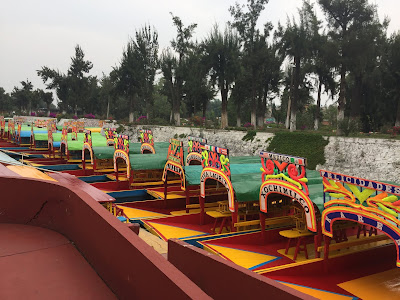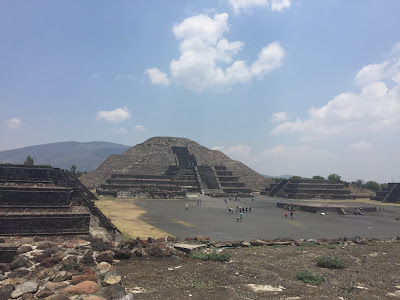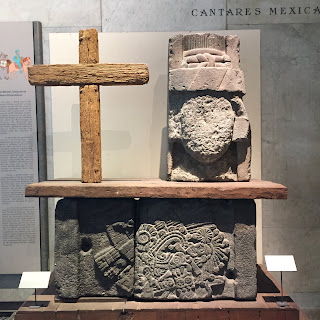Why not Nicaragua?
Earlier this year I was all set to lead a Habitat for Humanity (HFH) trip to Nicaragua as my first build in Central America. Prior to departing home on April 19, I received an email from HFH Nicaragua letting me know there were protests in Managua and that the protests were peaceful so the trip would proceed. After arriving in Mexico City and finding the gate for the connecting flight to Managua, I checked my email and text messages to learn the HFH trip had been cancelled because the protests had escalated significantly. Because half of my team was already in Managua, I decided to continue traveling to Nicaragua. Upon arrival, I was met and driven to a hotel literally across the street from the airport. I soon connected with the team members who were there and also contacted HFH folks in Toronto to provide an update. The next step was for all of us to revise our flights plans to either travel home or to another destination. Everyone re-booked their travel plans and all of the others had departed by noon the following day. My original plan was to stop in Mexico City for four days following my time in Nicaragua, so my flights were changed and I traveled to Mexico City a day after the others had departed. I was still able to spend four days in Mexico City, but had to change my hotel reservation to another hotel.
For those who may be interested, here is a bit of information about the protests. In responding to the national government removing important social benefits and being increasingly oppressive, many people in cities/towns across the country initiated peaceful protests against government. The number of people involved steadily increased as government instructed paramilitary forces (police and military) to take a heavy-handed approach to quell the protests. Within a month of the first protests, 300 civilians had been killed; by fall 2018 the number of civilians killed had risen to over 500.
I was very disappointed for the cancelled trip, but the right decision was made given the serious concerns about safety and security. My heart goes out to the Nicaraguan people and I hope their efforts for justice are rewarded.
Four Days in Mexico City
My lodging in Mexico City - Historico Central - was a boutique hotel in a great location with plenty of comforts and conveniences. It offered standard things one expects (free WiFi, air conditioning, flat screen TV with international stations available, comfortable bed and very helpful staff) and it also had a few extras that were much appreciated. The buffet style breakfast had many tasty selections, a small bottle of wine and a special chocolate were placed in my room every evening of my stay, free bottled water, free juices and sandwiches 24/7. The hotel is 550 metres from Zocalo, which a large gathering place for locals and visitors. It is close to a wide array of restaurants and shops. Two photos of the hotel's atrium.
On my first day, I spent most of my time exploring near the hotel. First, I walked to Plaza de la Constitution (Zocalo), which is generally considered as the centre of the city. It is one of the largest plazas in the city and is regularly used for public celebrations and events. During my visit, there was a large display celebrating design with booths/displays from 92 countries, including Canada. It was fun browsing through the displays and most had a marketing and tourism orientation rather than a focus on design. I stopped at the Canadian booth to say "hello." Near the plaza is a site where archeological digs have unearthed some of the area's history.
On day two, my exploring started with a visit to the Frida Kahlo Museum, celebrating one of Mexico's most famous artists. She was born in the Cayoacan area of Mexico City to a Hungarian-Jewish father and Oaxacan mother. Despite having polio at a young age and being seriously injured in a trolley accident, she started to paint during her convalescence and miraculous recovery. Physical and emotional pain are dominant themes of her art. The blue-coloured museum is where she was born, grew up and died. Kahlo married the well-known muralist Diego Rivera. Their marriage is described as a love-hate relationship and eventually dissolved.
Next stop - Xochimilco. It is a network of canals flanked by gardens on raised growing beds. The reason for the raised garden beds is that much of Mexico City was a large lake at one time. Along with some other folks, I took a boat ride on a brightly coloured and decorated trajinera; sometimes these are mistakenly described as gondolas like those in Venice. The canals often are crowded with boats and it can get extremely busy. That was not the case for us. In total there are about 180 kilometres of canals. The vessels are pushed along by a man using a long wooden pole (thus the gondola comparison) and during the journey another boat will pull up behind with vendors offering to sell a variety of food and drink. A mariachi band boarded the front of the boat we were traveling on and starting playing with much gusto. Any suggestion of something for the band to play comes with a 150-peso price tag. It was a colourful and upbeat performance.
For those who may be interested, here is a bit of information about the protests. In responding to the national government removing important social benefits and being increasingly oppressive, many people in cities/towns across the country initiated peaceful protests against government. The number of people involved steadily increased as government instructed paramilitary forces (police and military) to take a heavy-handed approach to quell the protests. Within a month of the first protests, 300 civilians had been killed; by fall 2018 the number of civilians killed had risen to over 500.
I was very disappointed for the cancelled trip, but the right decision was made given the serious concerns about safety and security. My heart goes out to the Nicaraguan people and I hope their efforts for justice are rewarded.
Four Days in Mexico City
My lodging in Mexico City - Historico Central - was a boutique hotel in a great location with plenty of comforts and conveniences. It offered standard things one expects (free WiFi, air conditioning, flat screen TV with international stations available, comfortable bed and very helpful staff) and it also had a few extras that were much appreciated. The buffet style breakfast had many tasty selections, a small bottle of wine and a special chocolate were placed in my room every evening of my stay, free bottled water, free juices and sandwiches 24/7. The hotel is 550 metres from Zocalo, which a large gathering place for locals and visitors. It is close to a wide array of restaurants and shops. Two photos of the hotel's atrium.
I continued my walk in search of the human rights museum, which unfortunately was closed (it was Monday and many museums are closed on Mondays). Outside the museum, however, there were busts of a few human rights heroes - Martin Luther King Jr., Mother Teresa, Mahatma Ghandi and Nelson Mandela. In another area, I came across some art celebrating Salvador Dali. When in the same area, I also went to the top of the Torre Latinoamericana (tower), where the 44th floor observation level provides great views of the city. It is the tallest tower in Latin America.
View from the tower.
On my day-three adventure I traveled outside the city to the UNESCO World Heritage and most-visited Site in Mexico - Teotihuacan. A very interesting learning from that day was that the Teotihuacan pre-dated the Aztecs in this part of Mexico. The site is spread over a very large with the two dominant structures being the Sun and Moon pyramids. While the structures remind one of the Egyptian pyramids, apparently they are not pyramids. Rather the foundations are stacked on top of each other thereby giving them a pyramidal structure. It is hard to imagine how these structures were build given the available technology when they were constructed (AD 150 to AD 600). At one time, Teotihuacan was Mexico's largest ancient city and the capital of what was probably Mexico's largest pre-Hispanic empire.
With a late afternoon flight departure on my fourth full day in Mexico City and knowing the city can have significant traffic congestion, I had about half a day for exploring. My destination was the Museo Nacional de Antropolgia (National Museum of Anthropology). Working with a limited amount of time, I focused on museum sections of greatest personal interest - Teotihuacan, Mexica (aka Aztecs), Maya, arrival of the Hispanic, and indigenous people in modern times. I won't go into descriptions of the various sections except to say the range, creativity, beauty, and historic importance of the artifacts is simply incredible. While I came away with a much greater appreciation of the cultures and history of Mexico.....there is much more to learn! In terms of exploring, this was a wonderful way to wrap up my short visit to an intriguing city. Then, as somewhat anticipated, the drive back to the hotel to pick up my luggage and get to the airport was plagued with traffic volume problems. However, I arrived at the airport well before my flight and then had a relaxing trip home.





















































No comments:
Post a Comment